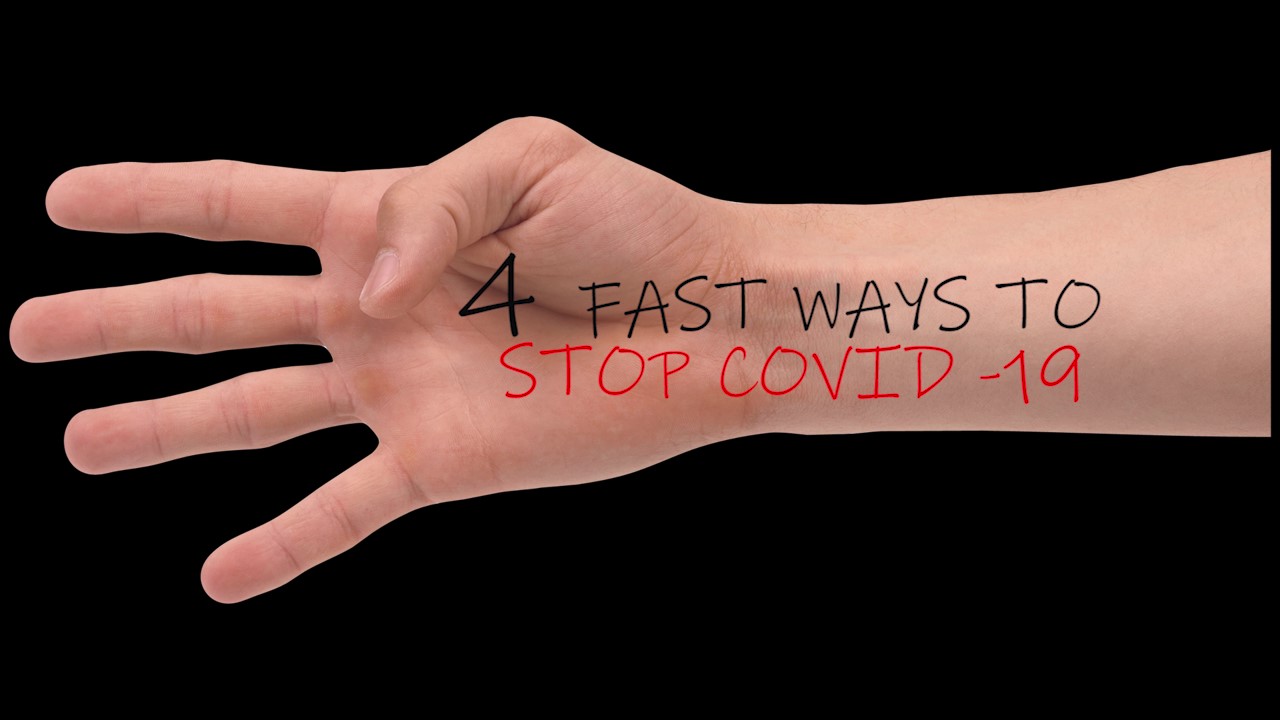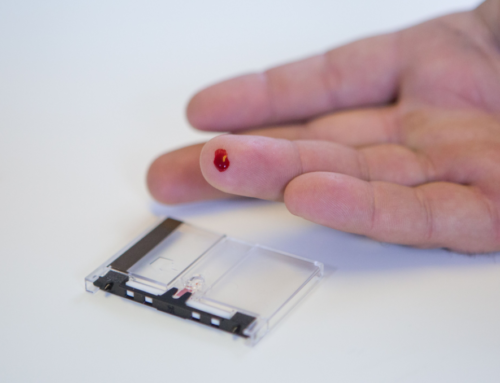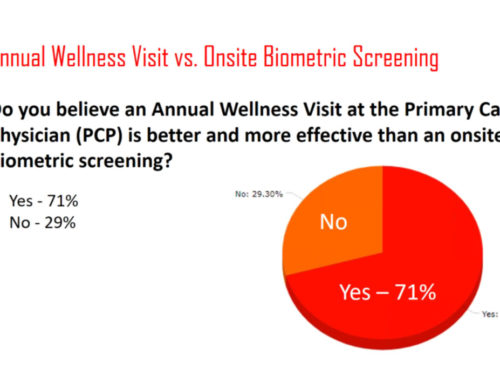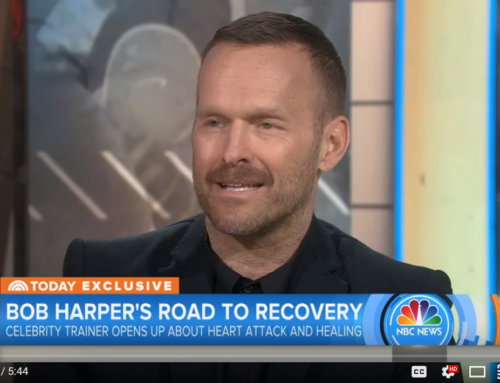Bill gates was once famously quoted as saying “I will always choose a lazy person to do a difficult job because a lazy person will find an easy way to do it.”
Well, if Bill ends up reading this, today is his lucky day. This pandemic is absolutely a difficult job and I am that lazy person. Over the last few weeks we’ve heard medical experts and trusted industry leaders – including Bill Gates – urge that the quickest path to slowing the spread is to test, test, test. Test as many people, as quickly as possible. Once everyone is tested, you know who to isolate and can immediately notify others who have been in contact with them. This is the fastest way to safely get America back to business as usual. But how do we get enough tests to enough people in enough time? Well, read on.
This is how to solve this monumental problem.
Here are four strategies that revolve around scaling the testing capacity of United States citizens. A few public, a few private – everyone needs to step up and do their part – rather than passing the bucket and hoping someone else puts out the fire. I am well aware any new solution comes with hundreds of problems no one has though of, but I truly think these are some solutions that could move the needle in a huge way.
- Mail 300 million Americans an at home Covid-19 rapid panel blood test, they only cost about $30 and that is what a business like mine can purchase them for. Total estimated cost – under $10 billion. Just a little cheaper than 2 trillion with potentially a quicker ROI for a business as usual economy.
- Utilize areas that are designed for high traffic already that are NOT currently in use because of the pandemic and make them greatly useful again. Emergency use of the traffic and parking areas of all NBA, NFL, MLB, NHL and concert /venues, amusement parks, possibly even airports is required. Under $250k/ month for medical staff labor per location for 30 days with each site able to test 1,000 people a day minimum.
- Repurpose the emergency use of the mobile healthcare industry nationally as the office space / medical equipment storage facilities for all drive through testing sites, as well as rural. Between $30,000- $45,000 a month per mobile unit asset deployed.
- Spit a mucus sample into a cup, put it on ice/freeze it and let the labs run the tests. Sounds simple, but it’s already happening.
Idea #1
MAILING TESTS- Alright so let’s start with our first idea. Over the last two weeks I have been bombarded with emails from companies that can sell me rapid panel – 15 minute result – Covid-19 kits for anywhere from $14 – $39 a test kit. There are in fact 21 companies that have received EUA, FDA distribution rights for these tests. Many of these companies distributing tests have been Emergency Use Authority FDA approved. For the people reading this that do not know what those tests are yet, you will soon. Basically they work like a pregnancy test. Instead of urinating on a strip and waiting for the two lines to show up, you put two drops of blood on a strip and wait for the lines to appear. This gives you the result within 15 minutes. Where did I get the $10 billion dollar cost? Well, you multiply 300 million people times a $30 average price that a little company like mine can buy them for. That is how you get to nine billion, I added another one billion for shipping costs. This idea came from a paramedic business partner of mine and is so simple it’s amazing. You could literally shoot one YouTube tutorial video on how to do the in-home test and watch how quickly other people teach their friends virtually how to do it.
Disadvantages: This can’t be done overnight, but I know of at least 5 factories that all claim to be able to pump out 5 million of these tests a week. I am sure that means there are far more factories that have a similar capacity and I bet we could also repurpose some factories here to make them as well. Other disadvantages of this are potential human error in testing and getting a false positive or negative. I think anyone who gets a positive should immediately get a Nasopharyngeal swab test that gives a secondary confirmation by running it through a PCR machine that reads the DNA. This would also reduce the load of swabs lab facilities are processing right now by only testing those who received positives. Most of these tests have a 97% same response rate as the nasal swab test.
The other obvious issue that would need to be solved is shipping. Each postal office branch already knows the number of addresses they deliver to daily. Each American household has an estimated average of 3.4 people. So – 3.4 multiplied by number of home addresses equals roughly the number of tests needed. I am sure there is a more accurate number that could be used as well for average members per household but would need to come from local authorities. When the postal worker delivers to each home he/she can ask how many in the house and deliver accordingly. Again, not a perfect method, but an idea nonetheless and one that has scale by repurposing existing infrastructure.
Advantages: Efficient and uses current infrastructure of USPS to deliver tests. At-home testing does NOT require medical staff or any personal protective equipment. Many testing centers have had to stop using nasopharyngeal swab tests because they don’t have personal protective equipment for their staff – not because they are out of testing materials. This is no longer an issue in a scenario where adults test themselves and then their kids or elderly parents living in the household. Everyone is basically stuck at home right now so receipt of the testing kits will be very high. This idea greatly reduces the burden on the number of tests being run by PCR testing machines that are already backed up with over 72 hrs wait time for a result and getting longer. Lets get those $30 test kits in the mail with the $1,200 checks please…disclaimer most of those checks will be direct deposited not mailed, but I hope you get the point ;).
Idea #2:
Utilizing our sports stadiums and other high traffic areas-
Without a doubt, our hospital systems are trying. But many have miscalculated and are now realizing that setting up a drive through swab center under a tent in your parking lot – that is not designed for high amounts of traffic volume – does not work. It has also been made clear to everyone that we need to lower the burden on hospitals right now if possible. You have to set up testing centers in places that are designed to handle traffic. Read this clearly – EVERY MAJOR LEAGUE/COLLEGIATTE TEAM /STADIUM IN THE US RIGHT NOW IS SHUT DOWN and they all have a financial interest to open as quickly as possible, but that is not going to happen until this thing is slowed or stopped.
Each team already has staff that knows how to direct traffic for up to 30,000 TO 60,000 people. You then need an MD, DO, PA, or NP on site to supervise a staff of medical assistants or RNs at a drive through swab, finger prick, or mucus saliva testing site. Take my hometown of St. Petersburg where the Tampa Bay Rays play. Opening day has passed, but you have a stadium that is built, and an empty parking lot with a staff of people who know how to direct traffic. The Rays could just offer their parking lot and traffic folks – or do something even bigger. The teams could pay the staffing costs to have 40-50 medical assistant on site to test 1,000 people a day for 30- 45 days that would only cost them between $200,000 – $300,000. Other teams could follow suit and subcontract healthcare workers to do this for them and ensure they get back to business as usual as soon as possible. Teams could even test-run the site with their season ticket holders first. The PR optics of that might not be great but all these sites need a soft run through. I mean, consider it a $10 season ticket holder marketing expense if you had 30,000 season ticket holders and did exams for 30,000 people in 30 days and it cost you $300,000 to staff. In this scenario, any sports team that says, “Hey, we love our community and are going to help everyone get tested,” is a hero. I recently read Disney is losing $400,000 a day from not being open. Why not make a private investment in helping test and slow this down so you can re-open sooner even if it’s just to Florida or California local passholders only at first? This probably costs less than standard Business Income and most likely has a way higher return on investment for companies because they will be able to return back to normal business operations sooner than if they offered no help.
Idea #3:
Mobile Healthcare solutions-
Would it shock you if I told you there are more than 1,000 mobile healthcare units across the United States that are either being underutilized or not used at all. I was recently on a call with all the different mobile healthcare companies in Florida (there is actually an association http://www.mobilehca.org/ )and – by our count – we have about 20 mobile units just in Florida that are just sitting doing nothing right now. Nearly every mobile clinic company on the call agreed that there are several ways to use our units right now: as office space, changing areas, equipment storage and hand washing stations for drive through or walk up outdoor testing centers. And for those who know the Florida heat, at the very least they’d serve as a quick air conditioning break for medical workers standing outside all day in 90-degree heat with face masks on.
Nearly all of these units are somewhere between 24 – 40ft long and can carry plenty of medical personal protective equipment, testing supplies, and act as a mini command center to run a site anywhere. I think we will see FEMA and the CDC purchase a lot of these things once this is all over – in case there’s ever a next time. I saw during a press conference early on that the Pentagon is building some, but again there are probably hundreds they could use right now without the time delay of building from scratch. Here is a map of all of them https://www.mobilehealthmap.org/map we have in this database.
Every governor should do a call with their state’s Mobile Healthcare Association, so they know what assets are currently going unused in their state. Or if they wanted to make it happen on a federal level, I am sure we could host a national call. Nearly all of these mobile clinic companies are already well known in rural areas and low-income areas where people don’t have cars to get to a drive through swab place – again making the need for mobile clinics even greater for the low-income and rural areas of the country. Many of them are also funded Federally by HHS already so are pretty much obligated to help.
Idea #4:
Spitting in a cup –
Let’s be clear – this is not medically glamorous, but it is what our local Quest Laboratory has told my medical directors we should start doing because they don’t have swabs right now. The bottom line is when a swab gets stuck up your nose it is grabbing a mucus and DNA sample to then go through a PCR laboratory machine to search for the DNA/RNA sequence for that living or dead Covid-19 virus. The same thing can be accomplished by handing a patient a cup to go hack up a good ‘ol loogie. That cup has to be put on ice or frozen and then sent to the lab for the same kind of sequencing as a nasal swab. The beautiful thing about this testing strategy is that it eliminates a lot of the bottlenecks we’re currently running into. The need for head to toe personal protective equipment, nasopharyngeal swabs, blood test supplies, etc. A medical person literally hands you a cup, tells you to go hack some phlegm up and spit away. The more variables we can eliminate in the process, the simpler the process. This means more testing and quicker results.
…
In closing, I am fully aware that every one of these solutions has multiple problems that need to be solved to fully execute. I could probably write another 40 pages on that alone. I wrote this article because I believe two things firmly:
- Any company with a business interest in
seeing things go back to normal should be willing to invest in stopping this
thing quickly.
- We have to do things in a more efficient manner, as quickly as possible, so we don’t waste energy, time and effort where it does not need to be spent.
I believe Bill Gates is correct in saying that “we have to raise the level of testing and prioritization dramatically in order to make sure we go through one shut down and minimize the amount of time this hurts both health wise and economically” https://www.cnn.com/videos/business/2020/03/27/bill-gates-coronavirus-town-hall-shutdown-april-peak-sot-vpx.cnn/video/playlists/stories-worth-watching/ This first problem that must be solved is isolation and testing at massive scale.
I believe what we are seeing as a testing response right now is a “big business” response. Big businesses tend to move more slowly than small ones. Remember the old saying, “Big ships turn slower”? Yet local officials are leaning on the big ships because it’s the easy safe bet. Politicians are making the safe bets for their careers by giving money to large hospital systems and expecting them to figure it out. Some of those hospital systems have their people calling smaller companies like mine to get medical equipment and supplies it’s crazy.
We have to lower the burden on those hospitals right now so they can set up more beds, get their ventilators ready and get enough personal protective equipment on hand. Leave the testing up to the little guys – the local physicians’ groups that can respond quicker. Why burden those large systems as testing sites? Why burden them with setting up sites in their parking lots that are NOT designed for high amounts of traffic? The most disturbing part about this is they are using their staff and resources on something that should be done by smaller, quicker, local primary care clinics and doctors. We must let hospitals prepare and be ready to handle the emergencies, not the testing.
I believe that I am one of the “lazy guys” Bill Gates believes in to solve problems. And even though the solution may not be easy, it could be simple.
Best Regards, Chris Yarn CEO Walk On Clinic, Inc cyarn@walkonclinic.com





